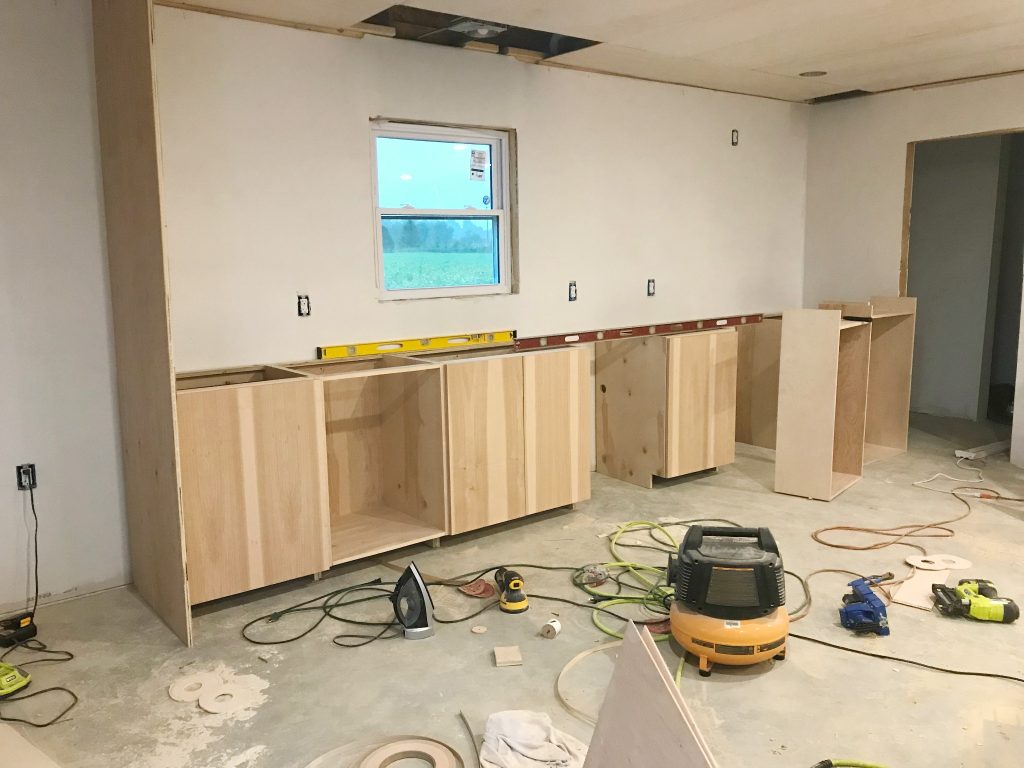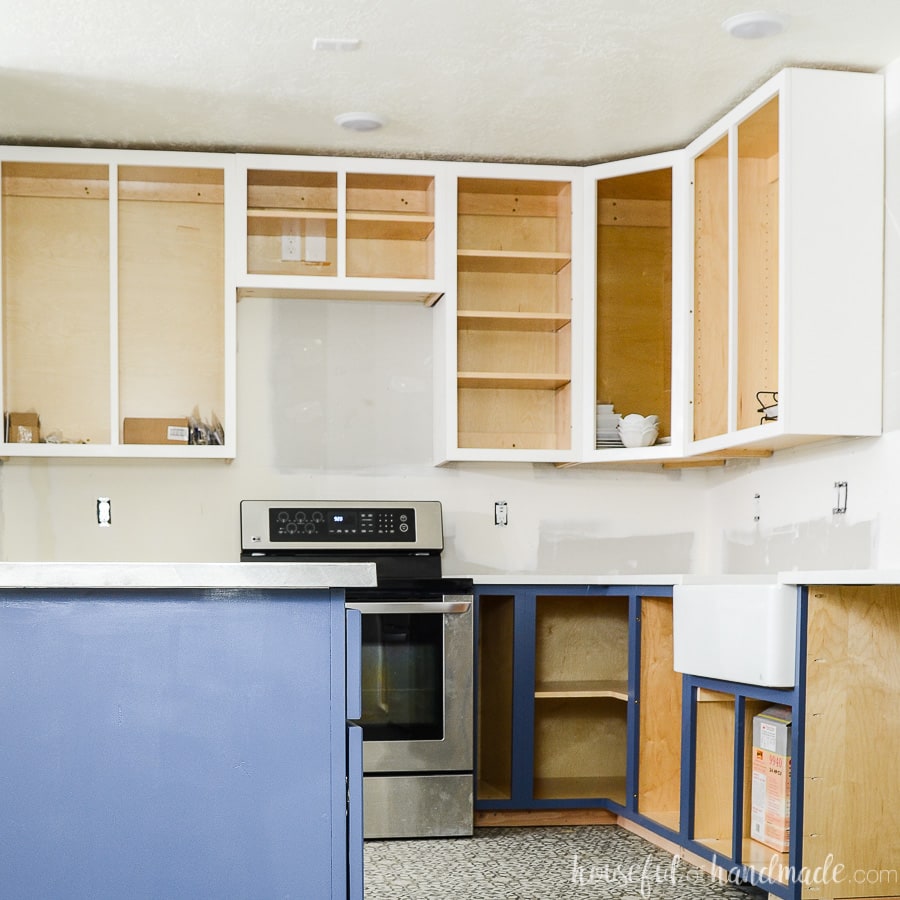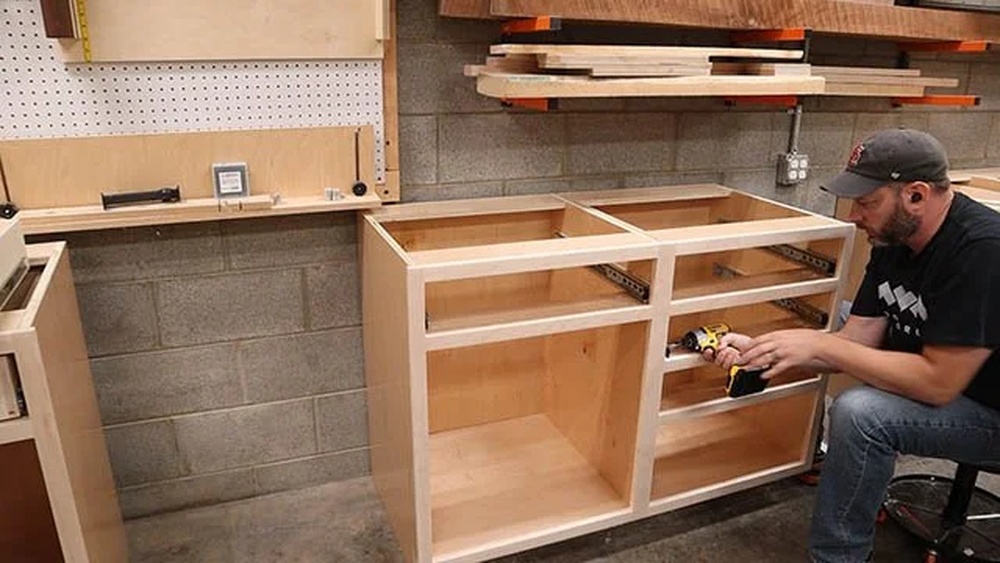Are you ready to transform your kitchen and give it a personal touch? Building your own kitchen cabinets might sound challenging, but with the right guidance, you can create beautiful, sturdy cabinets that fit your space perfectly.
Imagine saving money, customizing every detail, and gaining a new skill—all while making your kitchen truly yours. You’ll discover simple steps and practical tips to build kitchen cabinets that look professional, even if you’re a beginner. Let’s dive in and turn your kitchen dreams into reality!

Planning Your Cabinets
Start by measuring your kitchen space accurately. Use a tape measure to note the height, width, and depth where cabinets will fit. Write down all numbers clearly. Double-check measurements to avoid mistakes.
Choose cabinet styles that match your kitchen’s look. Decide between modern, traditional, or rustic designs. Think about cabinet doors, handles, and colors that suit your taste. Simple styles are easier to build for beginners.
Select strong and durable materials. Hardwood plywood like oak or maple works well for cabinet boxes. Use solid wood for doors and frames. Avoid weak or soft woods that may warp or break easily.
Gathering Tools And Supplies
Gathering the right tools and supplies is key before starting. Essential power tools include a drill, circular saw, and clamps. These tools make cutting and assembling faster and easier.
Hardware and fasteners like screws, hinges, and drawer slides are needed to hold parts together. Choose quality items for strong cabinets.
Safety equipment protects you during work. Wear safety glasses, ear protection, and dust masks. This gear keeps you safe from dust and loud noises.
Cutting Cabinet Components
Start with plywood sheets that are smooth and flat. Check for any defects before cutting. Use a circular saw or table saw for straight cuts. Mark your measurements clearly with a pencil. Cut slowly to avoid splinters and rough edges.
For side panels and shelves, measure twice and cut once. Keep panels square and edges clean. Shelves should fit snugly inside the cabinet frame. Sand edges after cutting for a smooth finish.
Cutting doors and drawer fronts needs extra care. Use the same plywood or solid wood for a better look. Make sure the pieces match the frame size exactly. Sand all edges to remove any rough spots before assembly.

Assembling Cabinet Boxes
Start by cutting panels with dado cuts to fit edges tightly. These cuts help the panels slot together securely. Use wood glue on the dado joints to add strong bonding. After gluing, drive screws through the sides to hold panels firmly. This method prevents gaps and keeps the box square.
Next, fit the bottom panel into its groove. Make sure it sits flush with the edges. Secure it using glue and screws or nails. Then, slide the back panel into place, fitting it into the dado cut along the cabinet’s back. Attach it with glue and screws to add rigidity. This step keeps the box from twisting or warping.
Building Doors And Drawers
Constructing frame and panels starts with cutting wood pieces to size. Use hardwood plywood for strong frames. Join the frame parts with wood glue and clamps. Insert panels into the frame grooves. This creates a solid door or drawer front that looks neat and lasts long.
Assembling drawer boxes means cutting four sides and a bottom panel. Attach the sides using screws or nails. Ensure corners are square for smooth drawer operation. The bottom panel fits into grooves or rests on a ledge inside the box. Add handles or pulls after assembly.
Sanding and finishing smooths rough edges and surfaces. Use fine-grit sandpaper to avoid scratches. Wipe dust off before applying stain or paint. Finish with a protective coat like varnish or polyurethane. This protects wood and gives a nice shine.
Installing Hardware
Start by attaching hinges to the cabinet doors using screws. Make sure they are aligned properly so the doors open smoothly. Next, fix the handles or knobs at the right height for easy use. Use a measuring tape to keep them even on all doors.
For drawers, install drawer slides inside the cabinet frame. Attach the matching part to the drawer. Check that the slides are level and straight. This helps the drawer move in and out without sticking.
Finally, adjust hinges and slides as needed. Tighten or loosen screws to get the perfect fit. Doors and drawers should open with little effort and close flush with the cabinet frame. Take time to test each one for smooth operation.
Finishing Touches
Painting or staining cabinets gives them a fresh, clean look. Choose paint for a smooth finish or stain to show wood grain. Apply thin coats and let each dry fully for best results.
Sealing for durability protects cabinets from water, heat, and stains. Use a clear polyurethane or varnish. Apply with a brush, covering all surfaces evenly. Let it dry completely before use.
Final inspection and cleanup is important. Check for any missed spots or rough edges. Sand lightly if needed. Clean dust and debris with a soft cloth. Cabinets are now ready to install and enjoy.
Installing Cabinets In Kitchen
Start by marking the wall studs using a stud finder. Mark each stud with a pencil at the top and bottom of the wall. This helps to know where to secure the cabinets firmly. Use a level to draw a straight line across the wall as a guide for cabinet height.
Next, secure cabinets to the walls by drilling pilot holes through the cabinet back into the studs. Use long screws to hold the cabinets tightly. Check the cabinet for level before tightening the screws fully.
For aligning and connecting units, place cabinets side by side. Use clamps to hold them together. Drill pilot holes through the cabinet sides and screw them tightly. This keeps the cabinets aligned and stable.
Troubleshooting Tips
Fixing misaligned doors starts with checking the hinges. Tighten any loose screws first. Adjust the hinge screws to move the door up or down. Small shims behind the hinges help align doors perfectly. Use a level to check if doors hang straight.
Dealing with uneven floors requires shimming the cabinet base. Measure the floor gaps using a ruler. Place shims under the cabinet feet to make it level. Use a carpenter’s level to confirm. Secure the cabinet once it is stable.
Handling hardware issues involves checking all handles and knobs. Tighten any loose screws. Replace damaged hardware with similar pieces. Lubricate hinges or drawer slides to ensure smooth operation. Test all parts before final installation.

Frequently Asked Questions
Is It Cheaper To Build Your Own Kitchen Cabinets?
Building your own kitchen cabinets often costs less than buying pre-made ones. DIY saves labor fees but requires time and skills. Material quality and complexity affect the final price. Budget-conscious homeowners benefit most from DIY cabinet construction.
Can A Beginner Build Cabinets?
Beginners can build cabinets by following clear instructions and using basic tools like saws and drills. Practice improves skills.
What Kind Of Wood To Use To Build Cabinets?
Use hardwoods like oak, maple, or cherry for durable, attractive cabinets. Plywood is budget-friendly and stable. Choose wood based on style and budget.
Can You Build Your Own Kitchen Cupboards?
Yes, you can build your own kitchen cupboards using basic tools like saws and drills. Follow simple guides for best results.
Conclusion
Building your own kitchen cabinets takes time and patience. Start with clear plans and simple tools. Choose quality wood that fits your budget. Measure twice, cut once, and assemble carefully. Take your time to sand and finish well. Practice makes perfect, so don’t rush.
Enjoy the satisfaction of creating something useful. Your kitchen will look great with cabinets you built yourself. Keep learning and improving with each project. This skill can save money and add personal touch. Now, you are ready to build cabinets with confidence.

